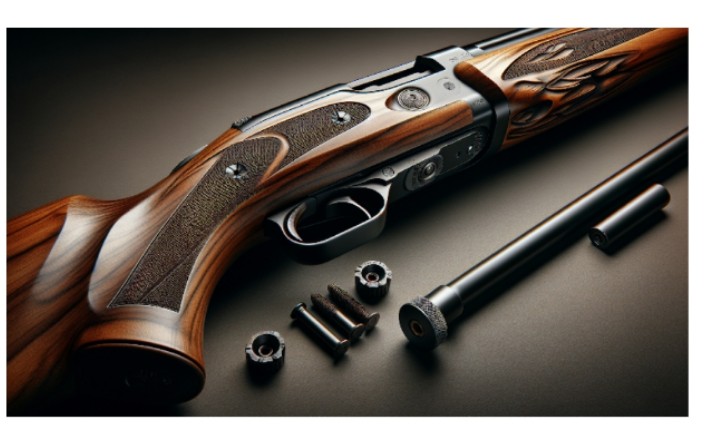Introduction
When it comes to shotguns, one of the most important components is the stock. The stock plays a crucial role in determining the overall fit, comfort, and performance of the shotgun. In this comprehensive guide, we will explore the differences between fixed and adjustable shotgun stocks, helping you make an informed decision when choosing the right stock for your needs.
What is a Shotgun Stock?
A shotgun stock is the part of the shotgun that you hold against your shoulder when firing. It provides a stable platform for aiming and helps absorb the recoil generated by the shotgun. The stock also houses the shotgun’s action and trigger assembly, making it an integral part of the firearm.
The Importance of a Properly Fitted Stock
Having a properly fitted shotgun stock is essential for accurate shooting and overall comfort. A stock that is too long or too short can cause discomfort, fatigue, and inconsistent shooting performance. A well-fitted stock allows you to maintain a proper cheek weld, ensuring that your eye is aligned with the sights or optic on the shotgun.
Fixed Shotgun Stocks
Fixed shotgun stocks are the most traditional and common type of stock found on shotguns. As the name suggests, these stocks have a fixed length of pull (LOP), which is the distance from the trigger to the end of the stock.
Advantages of Fixed Stocks
- Simplicity: Fixed stocks are simple and straightforward, with no moving parts or adjustments to worry about.
- Durability: Due to their solid construction, fixed stocks are generally more durable and less prone to wear and tear compared to adjustable stocks.
- Cost-effective: Fixed stocks are usually less expensive than adjustable stocks, making them a budget-friendly option.
Disadvantages of Fixed Stocks
- Limited fit options: With a fixed stock, you are limited to the predetermined length of pull, which may not be ideal for shooters of different sizes or those wearing bulky clothing.
- Lack of versatility: Fixed stocks do not allow for easy adjustment to accommodate different shooting situations or user preferences.
Adjustable Shotgun Stocks
Adjustable shotgun stocks have gained popularity in recent years due to their ability to adapt to different shooters and shooting situations. These stocks offer the flexibility to adjust the length of pull, comb height, and sometimes even the cheek piece position.
Advantages of Adjustable Stocks
- Customizable fit: Adjustable stocks allow you to fine-tune the fit of the shotgun to your specific body size and shooting style, ensuring optimal comfort and performance.
- Versatility: With an adjustable stock, you can easily adapt the shotgun to different shooting scenarios, such as wearing heavy clothing or using different shooting positions.
- Accommodates multiple users: If you share your shotgun with other shooters, an adjustable stock makes it easy to quickly adjust the fit for each individual user.
Disadvantages of Adjustable Stocks
- Complexity: Adjustable stocks have more moving parts and mechanisms compared to fixed stocks, which can increase the complexity of maintenance and potential points of failure.
- Added weight: The additional components and adjustment mechanisms in adjustable stocks can add weight to the shotgun, which may be a consideration for some shooters.
- Higher cost: Adjustable stocks are generally more expensive than fixed stocks due to their added features and complexity.
Types of Adjustable Shotgun Stocks
There are several types of adjustable shotgun stocks available on the market, each with its own unique features and adjustment options.
Telescoping Stocks
Telescoping stocks, also known as collapsible stocks, allow you to adjust the length of pull by sliding the stock in or out. This type of stock is commonly found on tactical and home defense shotguns, as it enables quick adjustments for different shooting positions and user sizes.
Folding Stocks
Folding stocks are designed to fold to the side or over the top of the receiver, making the shotgun more compact for storage or transportation. Some folding stocks also incorporate length of pull adjustments, providing additional versatility.
Pistol Grip Stocks
Pistol grip stocks feature a distinct pistol grip that provides a more ergonomic and comfortable grip on the shotgun. These stocks are popular among tactical and home defense shooters, as they offer better control and maneuverability in close-quarters situations.
Factors to Consider When Choosing a Shotgun Stock
When deciding between a fixed or adjustable shotgun stock, there are several factors to consider:
- Intended use: Consider the primary purpose of your shotgun, whether it’s for hunting, sporting clays, home defense, or tactical applications. Different uses may benefit from different stock types.
- User size and comfort: Take into account your physical size and the size of other potential users of the shotgun. If you have a smaller or larger frame, or if multiple people with different sizes will be using the shotgun, an adjustable stock may be more suitable.
- Shooting style: Think about your preferred shooting style and the positions you frequently use. If you often shoot from various positions or while wearing different clothing, an adjustable stock can provide the necessary adaptability.
- Budget: Consider your budget when choosing between a fixed or adjustable stock. Fixed stocks are generally more affordable, while adjustable stocks come with a higher price tag due to their added features and complexity.
Proper Maintenance and Care for Shotgun Stocks
Regardless of whether you choose a fixed or adjustable shotgun stock, proper maintenance and care are essential to ensure its longevity and performance.
Cleaning and Oiling
Regularly clean and oil your shotgun stock to protect it from moisture, dirt, and debris. Use a soft cloth or brush to remove any dirt or grime, and apply a light coat of gun oil to the stock to prevent cracking or damage.
Storage
Store your shotgun in a cool, dry place to prevent warping or damage to the stock. Avoid storing the shotgun in humid or damp environments, as this can cause the stock to swell or crack over time.
Inspection
Periodically inspect your shotgun stock for any signs of wear, damage, or loose hardware. Check for cracks, splits, or loose screws, and address any issues promptly to prevent further damage.
Customizing Your Shotgun Stock
In addition to choosing between a fixed or adjustable stock, there are various ways to customize your shotgun stock to enhance its performance and aesthetics.
Recoil Pads
Adding a recoil pad to your shotgun stock can help reduce felt recoil and improve shooting comfort. Recoil pads come in different materials and thicknesses, allowing you to choose the level of recoil reduction that suits your needs.
Cheek Risers
Cheek risers, also known as cheek pads, can be added to the stock to provide a more consistent and comfortable cheek weld. This is particularly useful when using optics or sights that sit higher than the stock’s comb.
Sling Swivels
Installing sling swivels on your shotgun stock allows you to attach a sling for easier carrying and improved stability when shooting. Sling swivels can be mounted on the stock’s front and rear, providing various sling configuration options.
Conclusion
Understanding the differences between fixed and adjustable shotgun stocks is crucial when selecting the right stock for your needs. Fixed stocks offer simplicity and affordability, while adjustable stocks provide customizable fit and versatility. Consider your intended use, user size, shooting style, and budget when making your decision.
Remember to properly maintain and care for your shotgun stock, regardless of the type you choose. Regular cleaning, oiling, and inspection will ensure that your stock remains in top condition and performs optimally.
By taking the time to choose the right shotgun stock and customizing it to your preferences, you can enhance your shooting experience and achieve better performance on the range or in the field.


